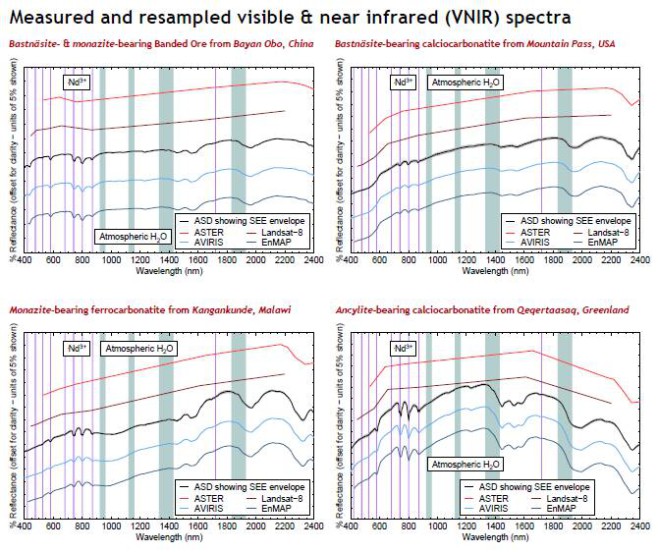Detecting rare earth elements with remote sensing
On the feasibility of detecting rare earth element (REE) deposits using remote sensing
- Start date
- 4 March, 2015
- End date
- 5 April, 2017
Rare earth elements (REEs) are a group of naturally occurring, chemically similar elements present in the Earth’s crust. Over the past decades these elements have become increasingly critical to many modern technologies, from magnets to mobile phones. However, these elements are typically very sparsely concentrated within minerals in the Earth’s crust, and new techniques are required to find them. By developing new remote sensing techniques to detect these important elements we also improve our ability to remotely map, understand and protect the Antarctic continent.
Many rare earth elements (REEs) have unique spectral properties at visible and near infrared wavelengths (VNIR: 400−1400 nm) that make them directly detectable with reflectance spectroscopy. Previous studies have indicated that neodymium (Nd) has the most diagnostic spectral features of the REEs. Although various studies have demonstrated that REE-bearing igneous complexes can be mapped using remote sensing techniques, current satellite-based multispectral instruments have rarely been able to resolve the narrow absorption features associated with REEs because of their coarse spectral resolutions. However, the improved spectral resolution in planned hyperspectral instruments, such as EnMAP, may enable REEs to be detected directly from satellite-based platforms in future.
In order to ground truth future remote sensing datasets, we have acquired spectral reflectance data from a range of petrologically-characterised REE-rich samples that contain the following REE-rich phases: monazite-(Ce), bastnäsite-(Ce), parisite-(Ce), synchysite-(Ce), ancylite-(Ce), eudialyte and pyrochlore. Our findings confirm the presence of strong Nd3+ absorbance features in the VNIR reflectance spectra of REE-rich rocks from locations including Bayan Obo, China; Mountain Pass, USA; Kangankunde, Malawi; and Qeqertaasaq, Greenland. Resampling (i.e convolving) our laboratory spectra to the spectral response functions (SRFs) of a range of remote sensing instruments shows that while REEs cannot be detected by multispectral instruments, REEs absoptions can be resolved by both aircraft- and satellite-based hyperspectral platforms at realistically achievable signal-to-noise ratios. Challenges facing REE detection by remote sensing are thus dominantly geological rather than instrumental in nature, i.e relate to deposit size, lithological heterogeneity and style of outcropping.

Publications